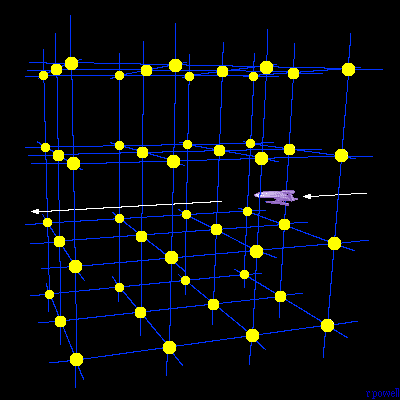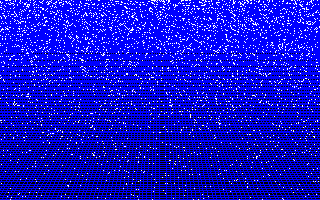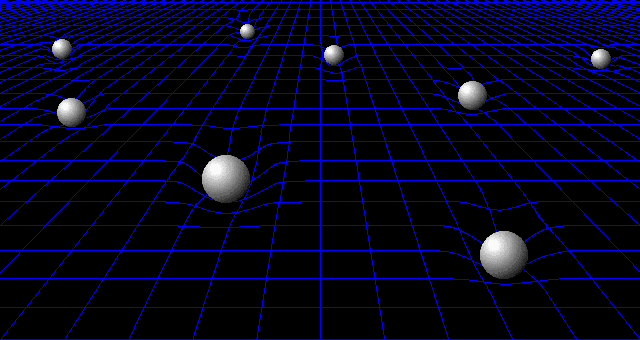
The universe we live in is expanding. We know this because we see galaxies and groups of galaxies steadily moving apart in the universe. This expansion has been occuring since the universe was formed 14 billion years ago in a very hot, dense event known as the Big Bang.
Here are six Frequently Asked Questions about our expanding universe:
There no centre of the universe because there is no edge of the universe. In a finite universe, space is curved so that if you could travel billions of light years in a straight line you would eventually finish back where you started. It is also possible that our universe is infinite. In both examples, groups of galaxies completely fill the universe and are moving apart at all points making the universe expand (see question 2).

There is a common assumption that the Big Bang was an explosion that occured in empty space and that the explosion expanded into the empty space. This is wrong.

Although space may have been concentrated into a single point at the Big Bang, it is equally possible that space was infinite at the Big Bang. In both scenarios the space was completely filled with matter which began to expand.
There is no centre of the expansion, the universe is simply expanding at all points. Observers in any galaxy see most of the other galaxies in the universe moving away from them.
The only answer to the question "Where did the Big Bang happen?" is that it occured everywhere in the Universe.
The Earth is not expanding and neither is the solar system, nor the Milky Way galaxy. These objects formed under the influence of gravity and stopped moving apart. Gravity also holds galaxies together into groups and clusters. It is mainly the groups and clusters of galaxies that are moving apart in the universe.
Space was created in the Big Bang. Our universe has no edge or boundary - there is no outside of our universe (see question 1). It is possible that our universe is part of an infinity of universes (see question 5), but these universes do not necessarily need a space to exist in.
Time was created in the Big Bang - we do not know if it existed before the Big Bang. This question is therefore hard to answer. Some theories suggest that our universe is part of an infinity of universes (called a multiverse) which are being continuously created. This is possible but very hard to prove.
It is possible that our universe is infinite and has been filled with matter everywhere since the Big Bang (see question 2). But there is also nothing stopping the universe expanding faster than the speed of light. Although at any local point within the universe, nothing can travel faster than the speed of light, this is not true for the entire universe. There is no limit on how fast space can expand.

We can imagine galaxies are like balls sitting on a rubber sheet which represents space. If we stretch the sheet, the balls move apart. Balls which are close together will only move apart slowly. Balls which are widely separated will seem to move apart very quickly.
People living on any one of the balls will see their own ball as stationary. They will see nearby balls moving away slowly and they will see distant balls moving away quickly. Very distant balls (beyond the horizon) can be moving away faster than the speed of light, but the people cannot see them - locally in their own part of the universe nothing is travelling faster than the speed of light.